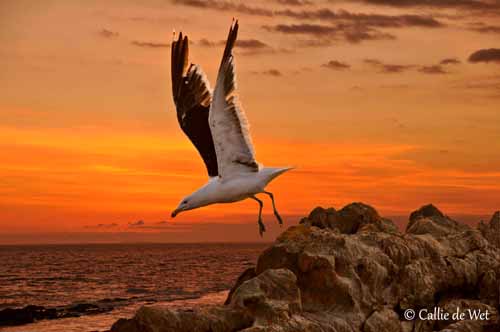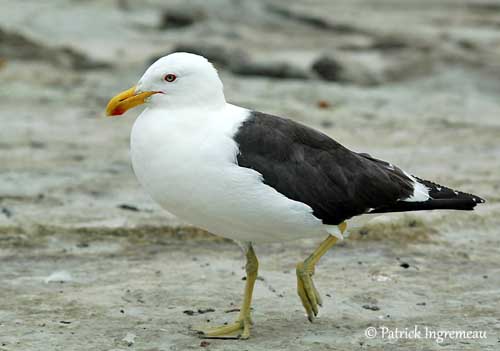
Fr : Goéland dominicain
All: Dominikanermöwe
Esp: Gaviota Cocinera
Ita: Zafferano meridionale
Nd: Kelpmeeuw
Sd: Dominikanertrut
Port: Gaivotão
Photographers:
Roger Ahlman
Pbase Galleries Peru and Ecuador
John Anderson
John Anderson Photo Galleries
Didier Buysse
Vision d’Oiseaux
Ken Havard
My Bird Gallery & Flickr gallery 1 & Flickr gallery 2
Patrick Ingremeau
TAMANDUA
Eduardo Andrés Jordan
MIS AVES – AVES DE ARGENTINA
Otto Plantema
Trips around the world
Simon Tan
PBase Bird galleries
Ingo Waschkies
Bird Photography
Callie de Wet
GALLERY
Philippe et Aline Wolfer
GALERIE
Text by Nicole Bouglouan
Sources:
HANDBOOK OF THE BIRDS OF THE WORLD Vol 3 by Josep del Hoyo-Andrew Elliott-Jordi Sargatal - Lynx Edicions - ISBN : 8487334202
BirdLife International (BirdLife International)
Australian Antarctic Division: Leading Australia's Antarctic Program
Birds in backyards (Birds Australia and Australian Museum)
What Bird-The ultimate Bird Guide (Mitchell Waite)
Kelp Gull
Larus dominicanus
Charadriiformes Order – Laridae Family
INTRODUCTION:
The Kelp Gull is present through much of the Southern Hemisphere. According to the authors, 4 or 5 subspecies are recognized, but Kelp Gull’s taxonomy is still in a state of uncertainty. As this species has extremely wide range, more subspecies might be added in the future. However, you will find on this page numerous pictures from several locations in the Southern Hemisphere.
DESCRIPTION OF THE BIRD:
Biometrics:
Length: 54-65 cm
Wingspan: 128-143 cm
Weight: 900-1300 g
The adult is a typical gull with black upperparts and white tail. On the black upperwing, the trailing edge is white and the wing tip shows white patches.
Head, neck, nape, tail and underparts are white.
The bill is yellow with red gonydal angle. The eyes are yellow, surrounded by red or orange eyering. Legs and webbed feet are greenish-yellow (mostly greyer in Africa).

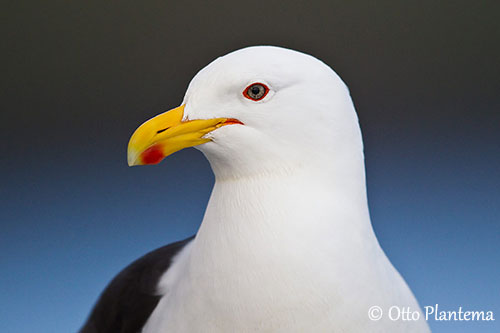
Race "judithae"
Possession Island
Crozet Archipelago
The Kelp Gull resembles Larus pacificus – Pacific Gull, but the latter has white tail with black subterminal band, and its bill is larger.
In non-breeding plumage, the adult has brown mottling on head and neck.
Both sexes are similar.
The juvenile is dark brown with buff and whitish speckles on head, neck, back and underparts. Flight feathers and rectrices are dark brown with buff edges, whereas secondaries and scapulars are white-tipped.
The immature shows much white on rump and tail.
The 3rd year resembles non-breeding adult. The full adult plumage is gained at 4 years.
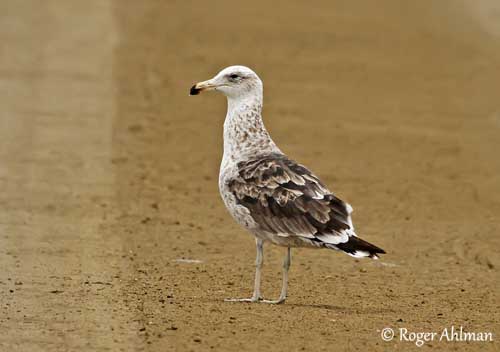
Ecuador
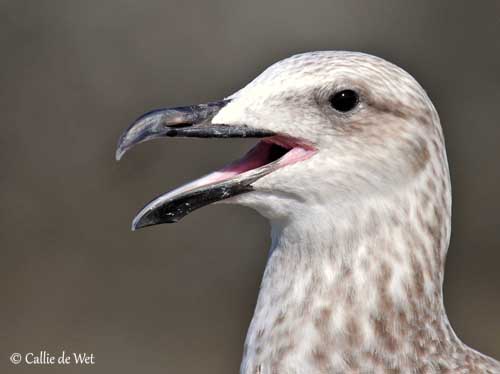
SUBSPECIES AND RANGE:
The Kelp Gull can be considered a monotypic species, awaiting more information about the subspecies. However, the 5 currently recognized races can be mentioned.
L.d. dominicus (here described) is found on the coasts of S South America and islands such as the Falklands and South Georgia. But it is also present in New Zealand and Australia. It is known as Southern Black-backed Gull in New Zealand.
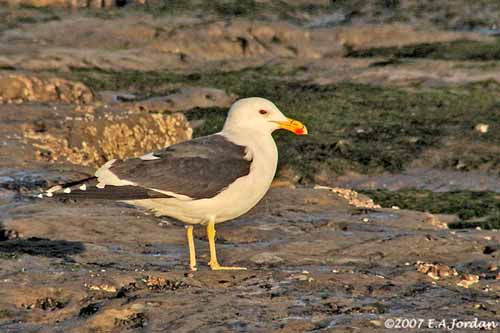
Valdes Peninsula
Argentina
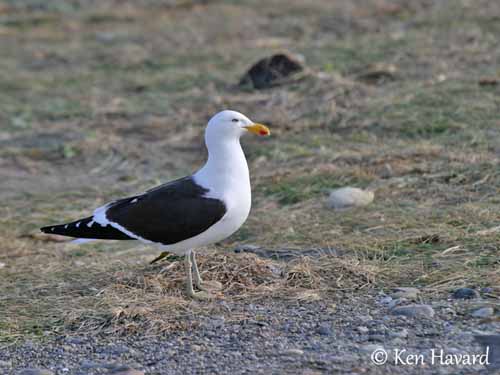
Region of Magallanes and Chilean Antarctica - Chile
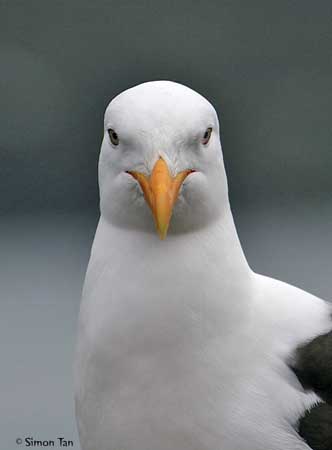
Stewart Island
New Zealand
L.d. austrinus occurs in Antarctica and Antarctic Islands.
L.d. judithae is found in Sub Antarctic Indian Ocean Islands.
L.d. melisandae occurs on the coasts of SW and S Madagascar.
L.d. vetula is found on the coasts of South Africa and Namibia. This race has greyer legs and feet, and dark brown eyes. It is known as Cape Gull.
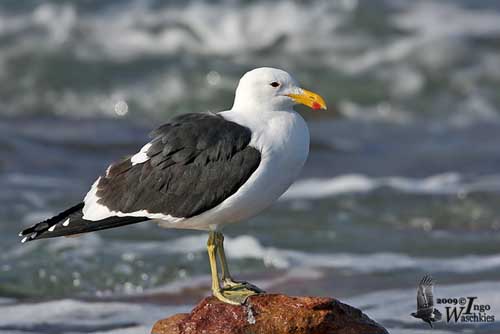
Race "vetula"
South Africa
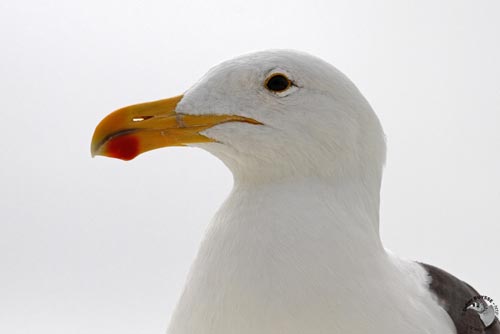
Race "vetula"
Namibia
The races “judithae” and “melisandae” were described in 2002, and evaluated as Kelp Gull’s subspecies on the basis of morphological characters.
HABITAT:
The Kelp Gull usually occurs along the coasts, especially in South Africa. But throughout the range, it also frequents large inland lakes in the Andes of Argentina. It also feeds and roosts around lakes, including smaller mountain lakes in New Zealand. It also frequents reservoirs, estuaries and rivers. It can be seen in farmland and lawns too.
The Kelp Gull breeds on islands, both oceanic and offshore, on headlands, cliffs above the sea, beaches, pastures and lava fields according to the range, and even in urban areas.
In the Falklands, it breeds on sand or shingle beaches, sand dunes, or heath and grasslands behind the beaches, but also in remote coastal plains with little human disturbances.
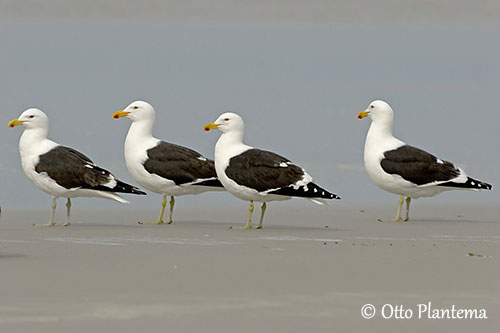
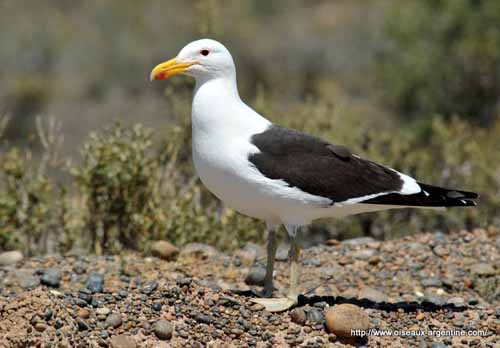
CALLS AND SONGS: SOUNDS BY XENO-CANTO
The Kelp Gull utters strident “kee-och”, and we can also hear melancholy “yo-yo-yo-yo-yo” and repeated “kwee-ah, kwee-ah, kwee-ah”.
It is noisy during the breeding season and while feeding, but also during aggressive interactions. Calls and songs are fairly similar to those of other gull species.
BEHAVIOUR IN THE WILD:
The Kelp Gull is an opportunistic feeder like numerous Laridae. It feeds on a variety of aquatic preys such as fish, molluscs, worms, echinoderms, arthropods, but also reptiles, amphibians, birds, small mammals and occasionally berries.
It is also a scavenger and can be seen at rubbish and sewage, and carrion and fish offal. But this gull may sometimes take sickly lamb and young poultry. It is able to attack and kill adult birds as large as geese.
It often follows the fishing boats and forages around the slaughterhouses and seafood factories.
It is known for stealing food from other seabirds, Laridae and also Spheniscidae.
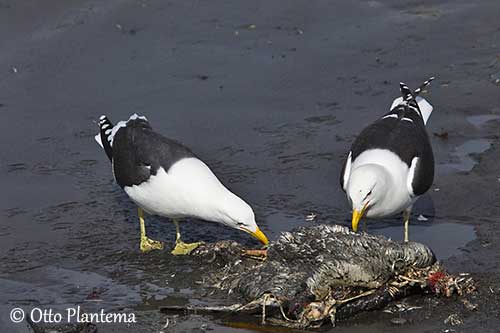
Race "judithae"
Possession Island
Crozet Archipelago
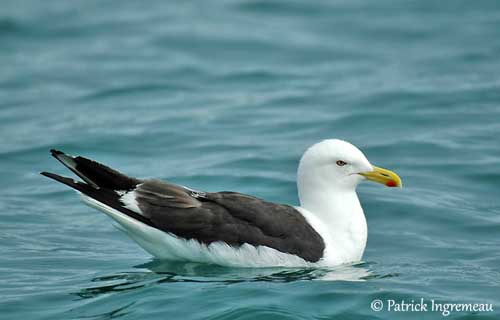
It hunts by plunge-diving to take food underwater or by dabbling in water. It picks food items from the ground. The shellfish are broken open by dropping them onto rocks or other hard surfaces.
The Kelp Gull breeds in colonies, occasionally as isolated pairs. They are monogamous, but the pair-bonds last about one year, from one season to the next breeding period. They usually strengthen the bond by courtship feeding during the winter.
The colonies are noisy. Alarm calls are given as soon as predators are approaching. The gulls may perform communal mobbing and attack in active defence.
The Kelp Gull is territorial and defends an area around the nest, because cannibalism occurs towards the chicks of the neighbour nests.
The displays are accompanied by calls. The most frequent is the “long-call”, often given from the ground or sometimes while flying. The gull raises the head and gradually lowers it while uttering a series of long notes. This display is usually followed by “head-tosses” during which the gull throws the head up over its back while giving a plaintive note.
Once the pair is formed, both mates call and display every day, and courtship feeding is frequently observed.
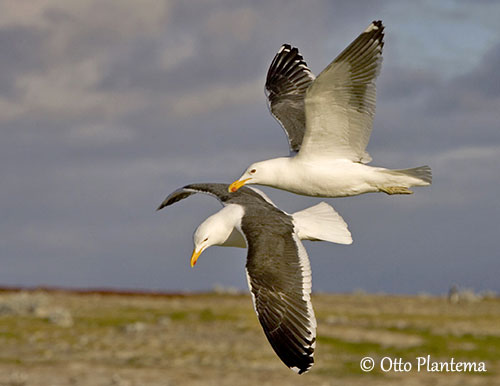
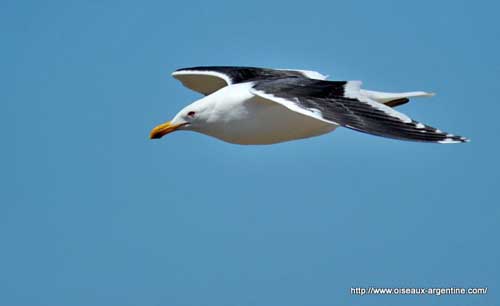
The Kelp Gull is resident in the Falklands, with some dispersion around the islands.
The birds of Antarctica (race “austrinus”) remain in their range all year round. They can be seen in open water away from the pack ice.
In Australia, the non-breeding birds disperse to Queensland, and along the S coast.
The New Zealand birds remain in their breeding areas and perform only some N movements.
In Africa (race “vetula”), the non-breeding gulls move as far as Mozambique on E Coast, and Mauritania and S Morocco on W coats.
Although being largely sedentary, some of the southern populations migrate N outside the breeding season.
The flight is powerful, fast and agile, with slow, steady wingbeats.
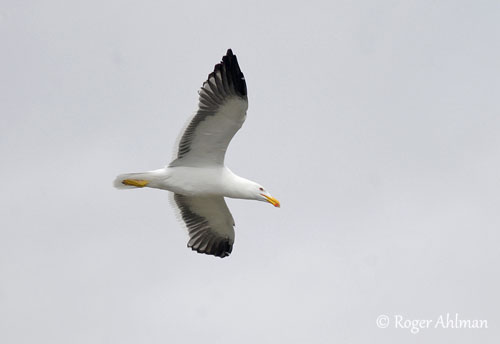
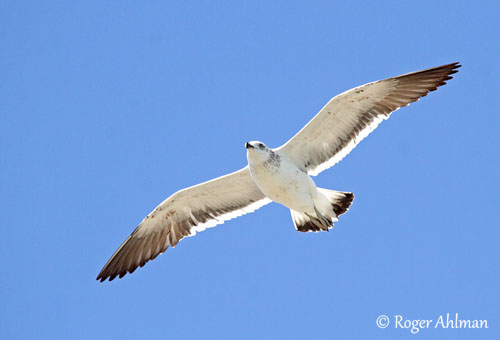
Second cycle
Ecuador
REPRODUCTION OF THIS SPECIES:
The breeding season varies, depending on the range, but usually occurs between September and January. They breed in December in the Falklands and at any time on offshore islands.
The Kelp Gull breeds in colonies, from dozens (at range’s edges) to several hundreds of pairs. The nest is built on rocks or sand, in well vegetated areas. It is often placed under the protection of rock, bush or tree, or any vertical structure. This is a bulky nest made with dried plants and seaweeds. It is lined with softer vegetation.
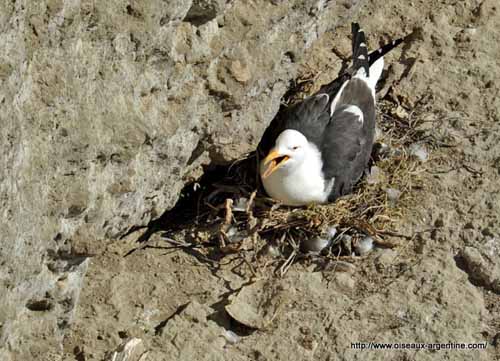
The female lays 3 pale olive eggs with dark brown markings. The incubation by both adults lasts about 24 to 30 days. At hatching, the chicks have greyish down with blackish spots on the head. They fledge about 7 weeks after hatching, but they still depend on parents for food for up to 12 weeks.
Both adults share all the nesting duties.
In the Falklands, the chicks hatch in January and fledge in late February. Parents and young leave the nest-site in March.
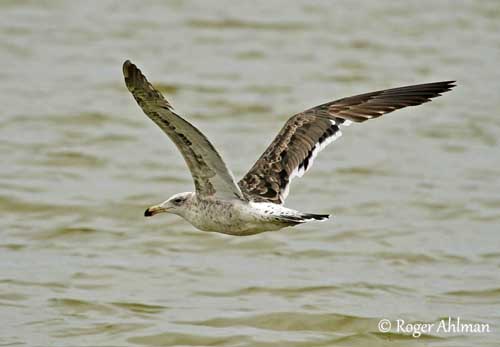
Immature
Ecuador
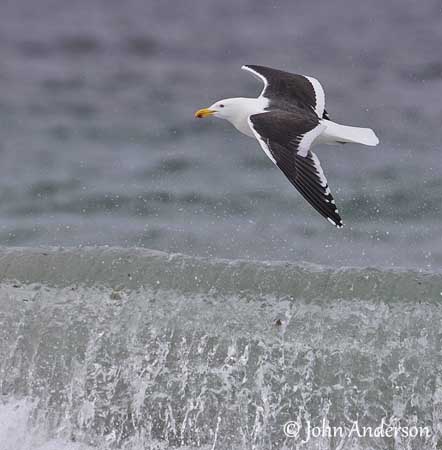
PROTECTION / THREATS / STATUS:
The Kelp Gull has large range and it is common and conspicuous in most part of its distribution. The overall population is increasing with agriculture and fishery expansion.
It is often considered a pest in urban areas, and might have negative effect on the coastal wildlife, through harassment and predation towards other bird species and small animals.
The Falkland’s population is about 30,000 breeding pairs. The global population is estimated to number 3,300,000/4,300,000 individuals.
The Kelp Gull is not currently threatened, and evaluated as Least Concern.
